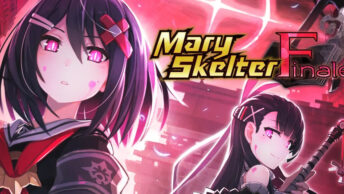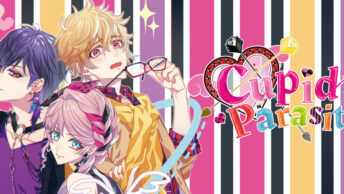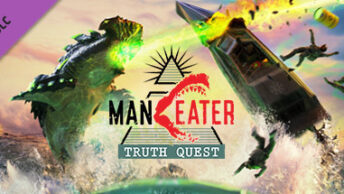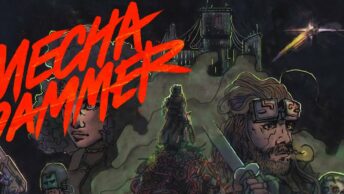The best post apocalyptic pen & paper RPG yet?
Free League
Genre: Tabletop RPG
Developer: Free League Publishing
Publisher: Free League Publishing
Release date: Feb 1, 2015


The Mutant franchise has more history to it than most people probably realize. It was originally released in 1984 and was meant to be a Swedish take on the then popular RPG Gamma World, but for the Swedish market. The writers put their own twist on the post apocalyptic setting though, and added cute mutated animals and a more lighthearted tone. Outside of its home market the franchise’s first major appearance was with the Warhammer 40.000-inspired Mutant Chronicles series of games. The current series of games have gone back to the roots of the franchise and is once more set in a post apocalyptic world, though it’s set hundreds of years before the first game.
Mutant: Year Zero is a traditional pen & paper RPG set in a grim post apocalyptic world, where survival is hard and dangers lurk in the ruins of our current day civilization. In Year Zero everyone are playing as mutated humans, and it is compatible with Mutant: Genlab Alpha which allows for mutated animals, Mechatron which is about robots and Elysium which is focused on regular humans. This review is based on the Swedish edition of the game so a few terms might be different in the English version, but the games should be more or less the same.
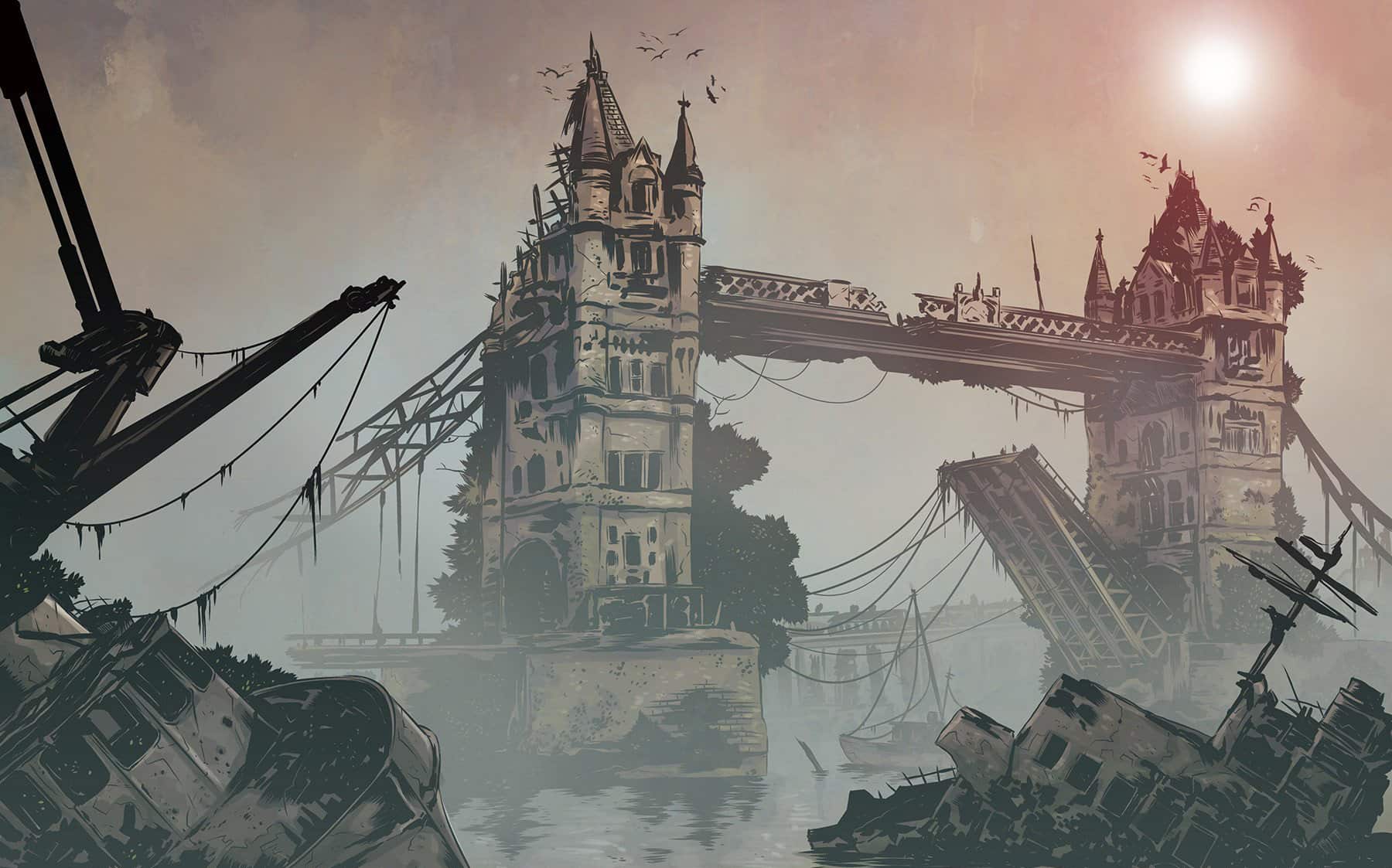
The Setting
The world went under. The bombs and the diseases wiped out most of humanity, the scars of a war fought on a massive scale can still be seen all around you, but of the great civilizations that ruled the world only ruins remain.
Access to clean water and edible food is rare and dangers lurk all around you. Mutated creatures lurk in the ruins and wilderness, rusty old machines left behind without their former masters still move about and most dangerous of all might be other people who are fighting for the same scarce resources.
The setting is intentionally left a bit vague so that you can play the game in whatever city you want. The game does come with two example cities though and describes them a bit more in detail. This is where there’s a difference between the two versions, the English and Swedish ones. The English edition uses London and New York as their example cities while the Swedish version uses Stockholm and Gothenburg. Similar events of war and disease happened all over the world though and so Mutant: Year Zero can easily be played in any city, the game master just needs to do a little bit of prep work.
The Plot
Something that’s quite common for games by Free League is that they have some kind of meta plot that you can play or ignore that’s available with just the core rulebook. In Mutant: Year Zero the meta plot is given a fare bit of space and helps explain what’s going on in the world and also lays the foundation for things to come.
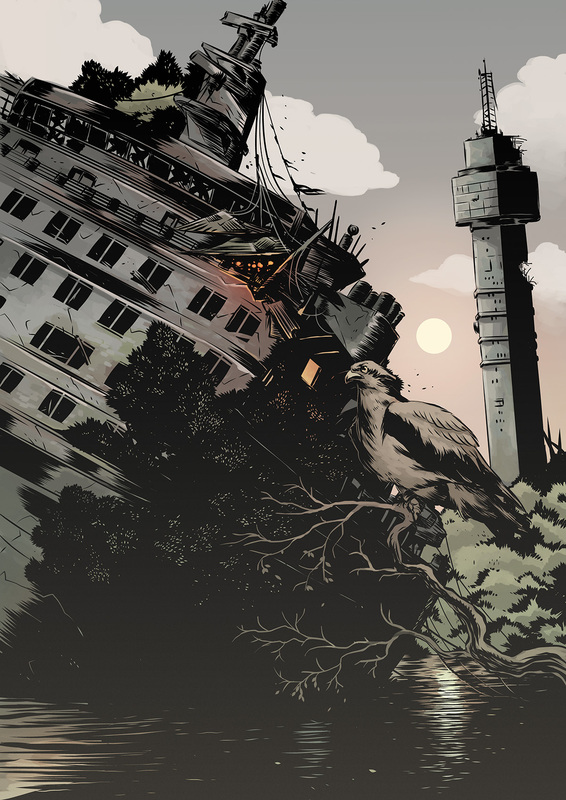
You’re a mutant, a person who’s been changed. All you can remember is living in the Ark and everyone around you are like you. Their mutations might be different, they might have different outlooks on life and the world, but you’re all mutants who have spent your entire life in the Ark. All but one, the Elder. Where most of you are roughly the same age and don’t remember a time before the Ark the Elder knows things about what’s out there. He’s been taking care of you, protecting you from the dangers of the zone. But the Elderis dying. He’s been growing visibly weaker in recent times and now he can hardly even walk on his own. Food is also becoming a problem, where once you had a vast amount of food preserved in metal tins this reserve is running out. And to make matters worse no new people are born.
But salvation is out there, or so the Elder says. Eden. Eden is where you came from and Eden is what holds the answers to your future survival. But what is Eden, and where is it? The Elder can’t answer this question. Maybe it’s just a figment of his imaginations, something that he’s made up to keep you all calm, or maybe old age is taking a toll on his mind as well as his body. Well, whatever it is and where it might be it’s your only hope, Eden has to be found.
The search for Eden is an entire campaign that will take quite a few game sessions to complete. How many will depend on the game master and the players but the game assumes that it will take a while. In the campaign the players will search the zone for any clues to where Eden is and what it might be while at the same time trying to build up the Ark and solving its food issues. Because the campaign is meant to be playable pretty much anywhere in the world it does not have an exact detailed structure, though some information about key locations and events are given, as well as some example locations that may or may not fit in with the chosen area. For a game master who does not care about the campaign that comes with the game a lot of the locations and material is still useable for their own adventures.
The Rules
Rules in Mutant: Year Zero are pretty simple but they can take a little bit of getting used to for players who are used to other systems. Mutant uses a dice pool system, a bit similar to Shadowrun or Vampire: The Masquerade, that is you take a number of dice based on your skills and attributes and roll them, and any rolls that are high enough will count as successes. In Mutant: Year Zero you only roll 6-sided dice, and when doing a test you add up your attributes, skill values and any relevant items that you want to use and any further modifiers and roll dice based on that. It’s important to differentiate between the dice from different sources though, as they can have different effects. Using different coloured dice is enough though there are dice made for Mutant: Year Zero and its sibling games that have special symbols on them. If you roll at least one 6 you succeed but sometimes having multiple successes can have an even greater effect. If you’re not happy with the result you can chose to “push” it, in which case you re-roll all dice that did not come up as a success or a 1, except for skill dice where you re-roll all failed results. Any rolls of 1, both from before you chose to re-roll, and from the re-rolled dice, other than from skills, mean that something bad happened. For attribute dice it means that your character has exhausted themselves and they take damage towards the relevant attribute, though they’ll never die from it and for items it means that your item is deteriorating. You have to re-roll all relevant dice when pushing yourself, you can’t just chose what dice you want to re-roll.
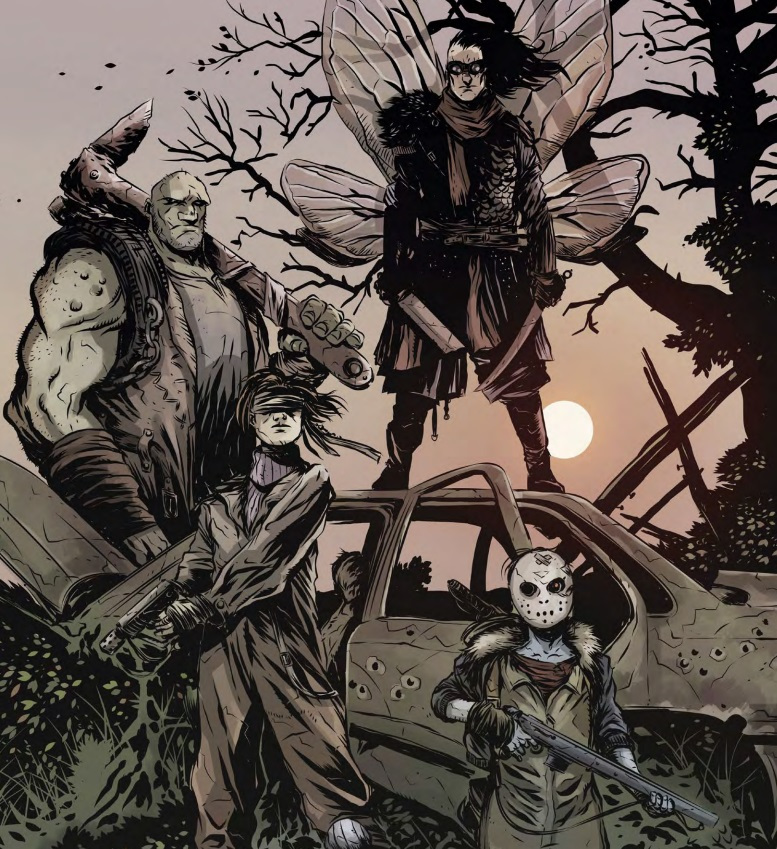
This system is how all tests are made in Mutant, be it in or out of combat. It makes it possible for players to have a good chance of succeeding with most things they do, as long as they have at least a few points in relevant attributes or skills, but it comes at a risk. For the players it’s a risk they need to be taking as any damage they take when pushing themselves also gives them points towards using their mutations. Having a system where players are expected to take risks like these can be a bit of a shock for certain players, particularly those who are used to playing it very risk adverse way, so while the rules themselves are simple in Mutant they do take some getting used to.
Sooner or later conflicts will happen. Conflict does not have to be with weapons, they can be with words, though you’re not going talk down an angry beast that tries to eat you. Both social conflicts and fights with weapons use similar rules, though the outcome can of course be very different. You make a skill check, usually with modifiers based on how hard it would realistically be (a single person trying to tell the leader of a group to go away will have a far harder time doing so than a person who has an armed group behind them). If you succeed you’ll have some effect, in the case of a social conflict you might be able to tell the other side to go away in exchange for them being allowed to fill their water bottles in the stream, and in case of a fight with weapons you’ll hurt your target. Physical combat is more dangerous as injuries take a while to heal, particularly if the character gets a critical injury.

Surviving out in the wilderness is no easy task and so characters might get thirsty, hungry, tired and contract “rot”. The later is especially bad as rot stays in the body and is hard to get rid of. As it accumulates characters will be injured and have a harder time doing things, though the other dangers are nothing to scoff at either. Characters can get rot from being in rot-infested areas as well as eating impure food or drinking impure water. Of course knowing what’s good or bad for you is not always so easy, and sometimes you’re left with no other choice than to drink from a source that you suspect is bad for you than not drink at all. After all ingesting some rot is still better than dying from dehydration.
The Characters and the Ark
Everyone in the group plays a mutated human, that is unless you also combine this game with one of the others in the series. When creating a character you chose a job for them, something they’re used to doing, which works a little bit like classes in some other games, though the jobs are not something that narrowly defines your character, and two characters with the same job can still have completely different skills and attributes.
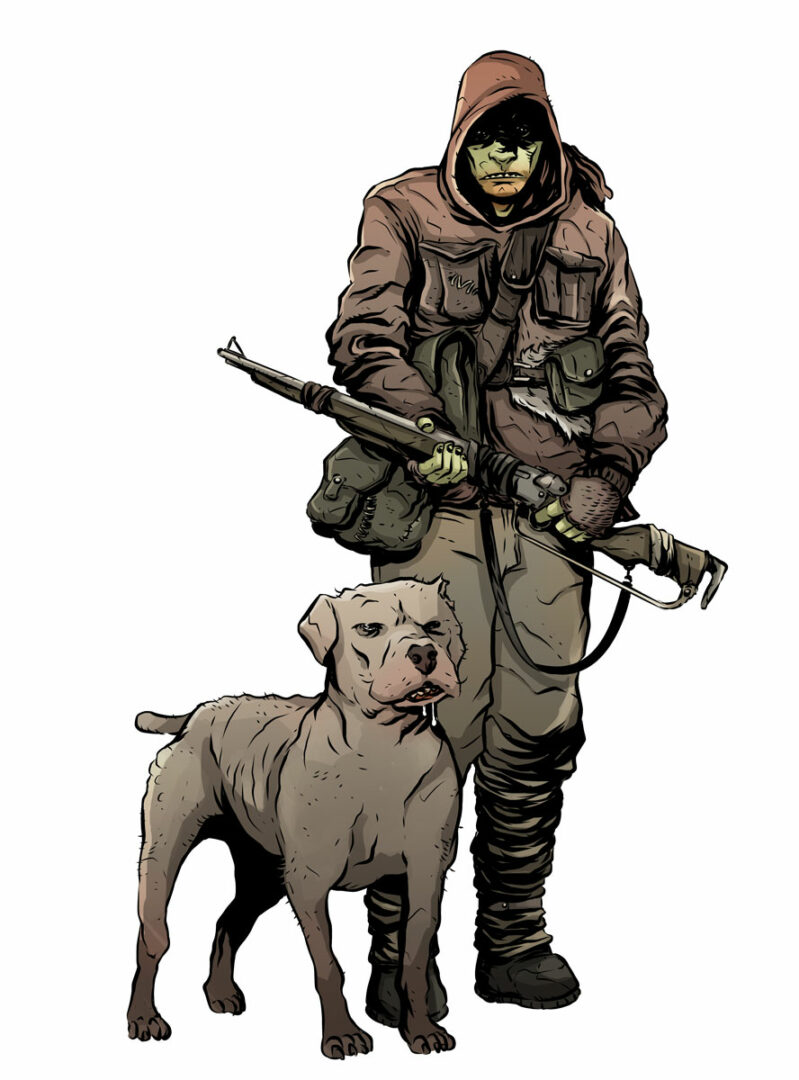
Jobs include things like Enforcer (big burly characters who can hold their own in a fight), fixer (the person who can get you what you want… for a price) and mutant with dog (the groups animal handler and tracker). All in all there are 8 different jobs, and the things that sets them apart mechanically is that they have different talents as well as different starting equipment, a unique skill and an attribute they can raise a bit higher at start than the other. Everyone starts with one job-based talent and each job comes with 3 different ones to chose from, and they can learn more as the game goes on. There’s one job that might require the group to talk a bit about how they’ll treat it though, and that’s the slave.
Making a character is as simple as picking a job, then assigning attribute points, then skill points, choosing a talent and finally getting a mutation. Attributes can be between 2-5 and skills have a max value of 3 at the start, and you have a pool of points to use for these. Mutations are then randomized and there are 30 different ones available. Mutations range from having wings that allow you to fly for a limited amount of time to being able to alter people’s mental state with your mind to being able to gain nourishment from the sun (and thus you don’t have to eat). While the rules say that you should randomize the mutations it’s still up to the GM to decide if it’s something you have to do.
After that it’s just figuring out your characters relationships with others in the Ark. If you’re playing the campaign that comes with the game everyone around you will be more or less the same age and will have lived together for their entire lives so the people living in the Ark with you will be people you know well.
The Ark is almost a character of its own. At the start of the game it’s just a place where you live with your fellow mutants, but over the course of several sessions it will be built and expanded upon. The people living there might start cultivating the land, building markets, creating roads through the wilderness and so on. They might also change how things are governed. Society might become more open and accepting and other people might start showing up in the Ark, or it might become more closed and militaristic. It’s up to the players and GM to shape the Ark.
Layout and Quality
It’s clear from the very start that Mutant: Year Zero is a modern RPG. The quality and readability of RPG books have gone up significantly over time, and Mutant is good even by modern RPG standards. The layout of the book is logical and it’s easy to find whatever rules you’re looking for. Mutant has a relatively light rule system and so there’s not a lot of rules that depend on other rules found in other places in the book, unlike something like say Pathfinder, so it makes sense that it’s pretty easy to find what you’re looking for, as there’s not a whole lot of rules to begin with, but even so the layout is commendable.

The art in the book is also well done. The heavy shading on most things gives a darker and more bleak feeling than the art in some of the past Mutant games, but then again, this game is set in a darker time so it fits. And there’s some almost haunting artwork in the book that shows the ruins of the world that came before, many of which are based on real locations.
The book itself is printed on thick paper that feels nice to flip through and won’t rip easily. The print quality is also excellent. This is a book that can handle being used regularly for play and be handled by a lot of players around the table (at the time of writing I’ve had this book for about 4-5 years and it’s seen a lot of use with very little visible damage to it beyond a few bumps and scratches).
Closing Thoughts
Mutant: Year Zero is beyond doubt a stellar RPG. It does a good job at giving players the feeling of being in a post apocalyptic wasteland where survival is not a given. The rules are fast and easy to both learn and teach to new players, something that’s always a big plus. The only real drawback with the rules is that some parts of it can feel a little bit gamey, which for those who want to really immerse themselves in the world can be a problem. They’re not as gamey as say Dungeons & Dragons, but there are a few elements here and there that might take a player out of the experience. There are also a few elements in the setting that some players might not be comfortable with, like slavery and cannibalism, but a GM can of course chose to tone it down or not include it.
The campaign and plot that’s included is quite interesting and manages to do a good job at introducing the world and provides a good amount of challenge. It’s also flexible enough that a game master can chose roughly how long it will take for the players to get through it, depending on how much room they give for looking for clues to Eden and how much they want to focus on exploring the surrounding and building up the Ark. The only real drawback with it is that it takes up so much space in the book that it might feel like you have to use it, it’s not just a quick adventure or two at the end of the book like in most other RPGs. For a GM that’s been playing RPGs for a long time it’s easy to ignore but for a newer GM who don’t want to play it it might feel like it restricts what you can do with Mutant: Year Zero.
Mutant: Year Zero is still a stellar RPG, one of the highlights of the last decade, and a worthy inclusion in any RPG collection. Also, anyone who got the “Fan edition” of Mutant Year Zero: Road to Eden will already have a PDF copy of this RPG. Just don’t get disappointed if Mutant: Year Zero does not allow you to play as a mutated duck, there’s entire other game focused on animal mutant, namely Mutant: Genlab Alpha.




